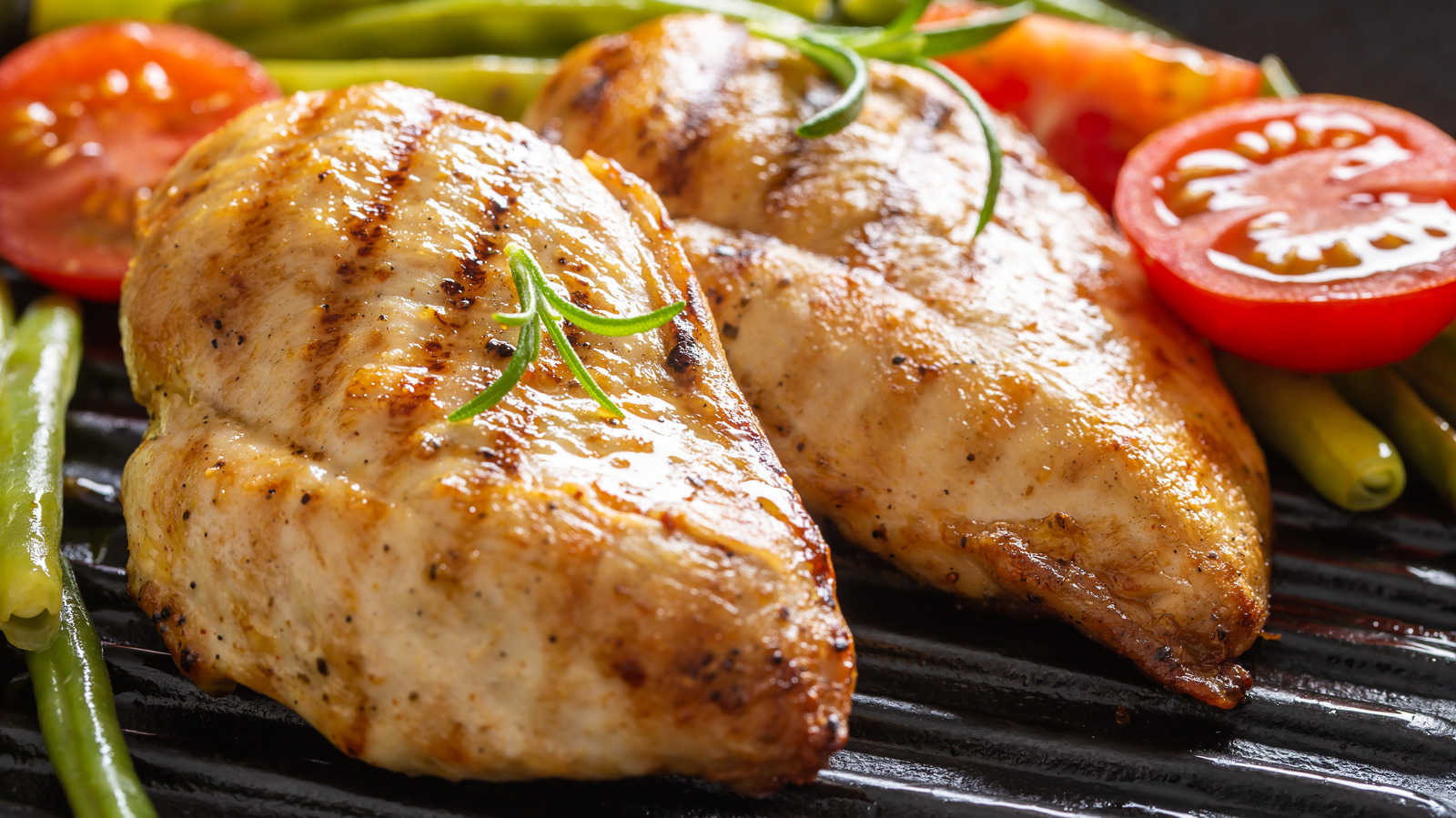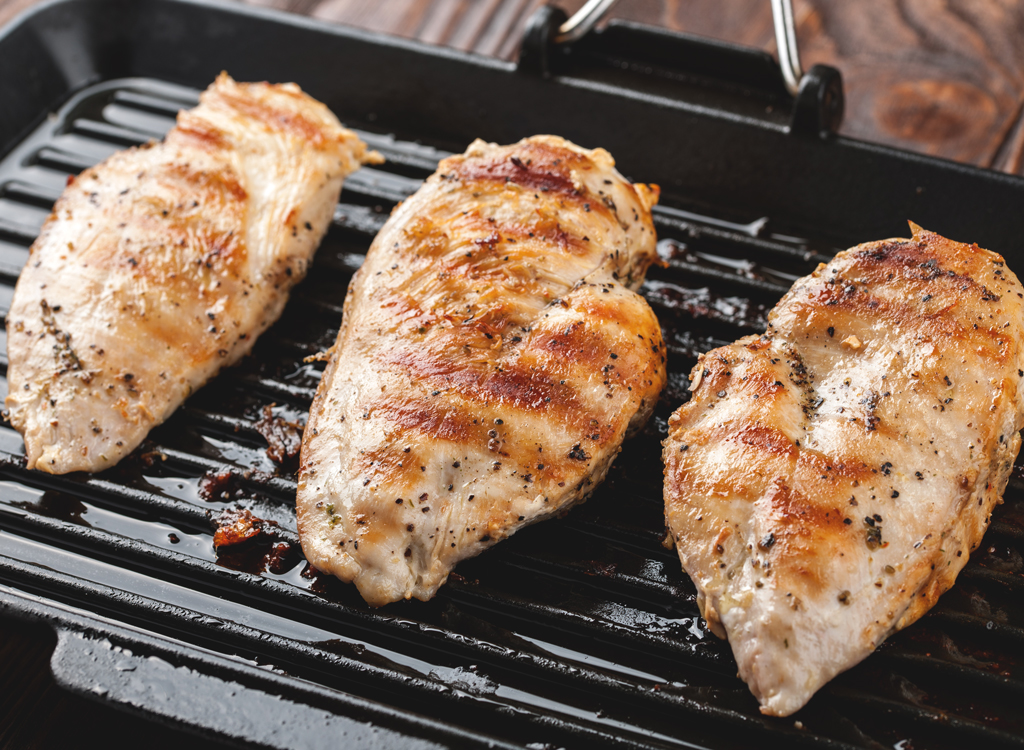Protein này cực kỳ linh hoạt, nhưng ăn nó hàng ngày có ổn không? Chúng tôi đã hỏi một chuyên gia.
Thực sự có rất nhiều điều bạn có thể làm với thịt gà. Đó là một loại protein phù hợp với bất kỳ loại món ăn nào bạn muốn chế biến, từ salad và súp đến bánh tét và thịt hầm. Tuy nhiên, trong khi loại protein này rất linh hoạt và tương đối rẻ đối với nhiều người, thì việc ăn nó hàng ngày có ảnh hưởng đến cơ thể bạn không? Chúng tôi đã nói chuyện với Mackenzie Burgess, RDN, một nhà phát triển công thức tại Cheerful Choices, về những mặt tích cực và tiêu cực của việc ăn thịt gà mỗi ngày và những điều cần lưu ý nếu loại protein đa năng này xuất hiện hàng ngày trên đĩa của bạn.
dinh dưỡng gà
Thịt gà là một nguồn protein đa năng và giàu chất dinh dưỡng như selen, phốt pho và niacin (vitamin B3). Tuy nhiên, mỗi phần có một hồ sơ dinh dưỡng khác nhau. Hãy xem sự khác biệt về dinh dưỡng giữa ức gà và đùi gà.
Ức gà
Theo USDA, một phần 3 ounce (85 gam) ức gà nấu chín không da chứa:
- Calo: 128
- Chất đạm: 26g
- Tổng lượng chất béo: 3 g
- Chất béo bão hòa: 1 g
- Carbohydrate: 0 g
- Selen: 24 mcg
- Kali: 332 mg
- Kẽm: <1 mg
- Vitamin B3: 10 mg
- Natri: 44 mg
- Sắt: <1 mg
Đùi gà
Theo USDA, một khẩu phần đùi gà nấu chín bỏ da nặng 3 ounce chứa:
- Calo: 164
- Đạm: 20 g
- Tổng lượng chất béo: 9 g
- Chất béo bão hòa: 2,4 g
- Carbohydrate: 0 g
- Selen: 20 mcg
- Kali: 223 mg
- Kẽm: 2 mg
- Vitamin B3: 5 mg
- Natri: 285 mg
- Sắt: <1 mg
 Lợi ích sức khỏe của thịt gà
Lợi ích sức khỏe của thịt gà
Bạn sẽ nhận được tất cả các axit amin thiết yếu
“Chicken is a high-quality source of protein that contains all of the necessary amino acids (aka building blocks) that we need to make important proteins,” says Burgess. “Proteins have a broad range of essential functions in our bodies, including the production of hormones and immune cells and the promotion of muscle growth.”
Protein contains 20 amino acids; the body naturally produces 11 of these—the other nine need to be consumed (hence why they are called “essential”). Animal protein sources, such as chicken, are known for being complete protein sources, meaning that chicken has the perfect balance of all nine essential amino acids.
You May Reach Your Protein Goals
Protein is an essential macronutrient in the diet to help the body repair and build new cells, such as muscle. The 2020-2025 Dietary Guidelines for Americans recommends that adults consume between 46 and 56 grams of protein per day, or 10% to 35% of their total calories. And according to a 2018 article published in Nutrients, the international recommended dietary allowance for protein is generally 0.8 grams per kilogram of body weight (1 pound is around 0.45 kilograms). For instance, someone who weighs 70 kg (154 pounds) would need about 56 grams of protein daily. However, this can easily vary from person to person—especially in different stages of growth and development, such as children, teenagers and during pregnancy.
“Although needs vary for each individual, I recommend aiming for about 15 to 30 grams of protein per meal to ensure protein needs are being met,” says Burgess. “Getting enough protein can also aid in satiety.”
Eating chicken every day is an easy way to reach those protein goals; Burgess points out that a simple 4-ounce serving of chicken provides 35 grams of lean protein. “Chicken in your meals can be a great way to meet your protein goals,” she says.
Potential Downsides of Eating Chicken Daily
You May Lack Some Essential Fats
While chicken can be a versatile and convenient protein to cook, if your diet doesn’t have a diverse protein profile, you lose out on some key nutrients—including essential fats, such as omega-3s.
“Eating chicken every day as your sole protein source could result in some nutrient gaps,” says Burgess. “For example, since skinless chicken breast contains very little fat, consuming it every day may lead to a lack of essential fats in your diet.”
Burgess recommends “including a healthy source of fat along with your chicken, like cooking it in olive oil or pairing it with an avocado salad,” to ensure that you’re getting a good amount of healthy fats in your diet.
You May Miss Out on Key Nutrients
Other sources of protein—both animal and plant-based—provide a myriad of other nutrients in the diet, which is why it’s important to aim for a variety.
“I recommend consuming a variety of proteins from both animal and plant sources throughout the week,” Burgess says. “Some of my favorite animal sources include salmon, shrimp, grass-fed beef, yogurt and eggs. My go-to plant protein sources are tofu, edamame, nuts, seeds and pulses. Pulses include beans, lentils and peas and are packed with important nutrients like protein, fiber, potassium and iron. This variety will give you a better diversity of nutrients in your diet. Plus, it also keeps meals fun and exciting!”
The Bottom Line
Thịt gà là một nguồn protein nạc đáng kể cung cấp tất cả các axit amin thiết yếu mà cơ thể bạn cần và giúp bạn đạt được lượng protein cần thiết trong ngày. Tuy nhiên, nếu bạn thích ăn thịt gà mỗi ngày, hãy nhớ rằng bạn sẽ cần kết hợp các nguồn protein và chất béo lành mạnh khác trong chế độ ăn uống của mình để có được tất cả các chất dinh dưỡng cần thiết—chẳng hạn như chất béo không bão hòa đơn và đa, omega- 3 axit béo, chất xơ, kali, sắt, canxi và nhiều hơn nữa.
Nguồn: https://www.eatwell.com







